Top Handleable Pet Birds for Interactive Companionship
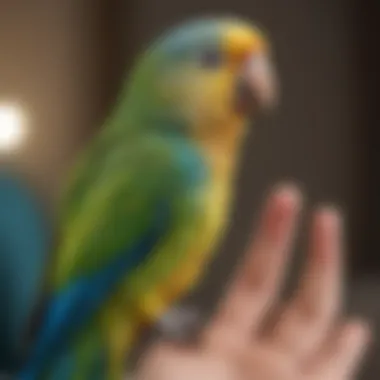
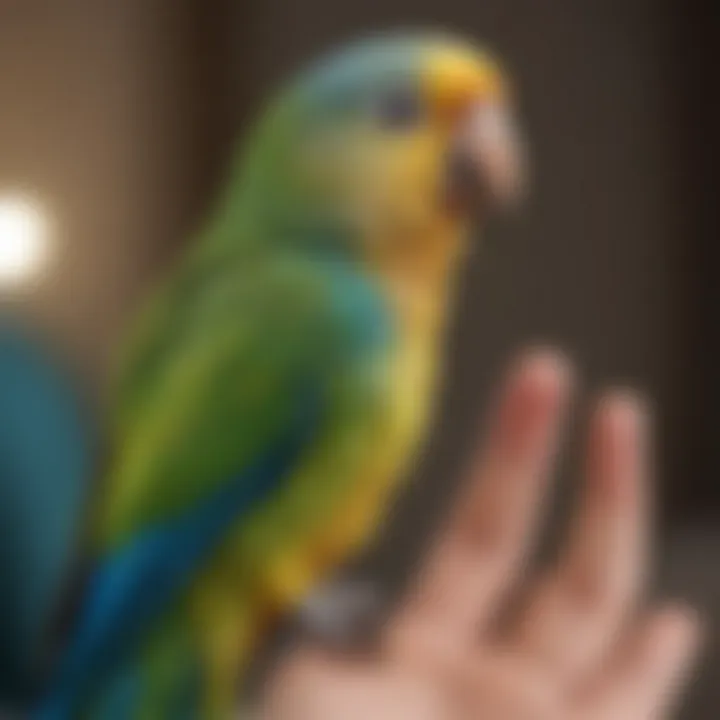
Intro
Selecting the right bird as a pet requires thoughtful consideration of their handleability. Different species exhibit a range of interactions and behaviors, making some more suited for handling than others. When you own a bird that enjoys social interaction, your experience as an owner can become increasingly fulfilling. Interactivity strengthens bonds that enhance both emotional well-being for both owner and bird.
As this article outlines various pet birds recognized for their handling abilities, it will also address care requirements, behavioral traits, and environmental catalysts that support these qualities. This guidance is aimed at aspiring bird parents and experienced caretakers eager to find a suitable feathered companion.
Care Tips
Proper care and daily routines are crucial for developing a trusting relationship between you and your bird. Here is an overview of important care aspects:
Daily Care Routines
Birds thrive in structured environments. Make feeding times regular, offering a variety of seeds, fruits, and vegetables. Morning is often the best time to provide fresh food and water. Spend time engaging with your bird, fostering interaction. Short training sessions can reinforce your companionship.
Cage Setup and Maintenance
Creating a welcoming environment in the cage sets the foundation for comfort and agility. Ensure their habitat has enough space for movement. The layout should include perches of varying thicknesses, different types of toys, and food- and water-dispensers that are easy to access. Clean the cage at least once a week to prevent buildup of debris and bacteria.
Hygiene and Cleaning Practices
Keep your bird's living area spotless. Use safe, bird-friendly cleaning products. Remove droppings daily, and change the bedding regularly. Pay attention to full cleaning of all surfaces to eliminate any harmful slob's buildup.
Seasonal Care Adjustments
Birds can be sensitive to temperature changes, so adjusting care with seasons is important. In hotter months, keep their space cool, and check water levels frequently. When it's colder, provide additional bedding and keep them indoors.
Behavioral Insights
Getting to know your bird’s body language nurtures connections and understanding of their needs. They communicate in various ways, often displaying key nuances.
Understanding Bird Body Language
Birds exhibit signs of relaxation or anxiety through body posture and movements. An upright posture with raised feathers typically indicates happiness. In contrast, fluffed up feathers may suggest stress or cold. Recognizing these cues helps in adjusting the care approach according to the mood.
Common Behavioral Issues and Solutions
Address behavioral issues proactively. If a bird exhibits destructive behavior or excessive vocalization, reassess its stimulation level. Increasing interactive activities throughout the day usually reduces these dils. Also, addressing potential sources of stress is critical, as many behavioral issues stem from feeling threatened.
Positive Reinforcement Techniques
Encouraging desired behaviors can be achieved using positive reinforcement. Offer treats or verbal praise when your bird meets expectations in training or socialization exercises. This method not only enhances learning but strengthens connections.
Social Interaction Needs
Birds are inherently social creatures. It’s important to recognize each bird's individual needs, not all species require the same amount of social engagement. For instance, cockatiels may need more interaction than canaries. Pay attention to the signs of loneliness or boredom.
Nutrition Guides
Providing balanced nutrition is vital for your pet bird’s health and happiness.
Essential Diet Components
Offer a high-quality seed mix specifically formulated for the type of bird. Include fresh fruits, vegetables, and occasional nuts to ensure a well-rounded diet. Make sure to research dietary requirements for different species, as they may vary quite a bit from one another.
Safe and Toxic Foods
Safety should always be a priority. Avoid feeding your bird foods such as avocados, chocolate, and caffeine, as these can be toxic. Research and compile a list of safe foods tailored to your bird's species.
Supplements and Treats
Consider adding calcium or vitamin supplements if needed, especially for breeding birds. Treats should be offered sparingly. Healthy options such as millet sprays can be enticing without overly focusing on their taste buds over nutrition.
Feeding Strategies for Different Species
Find compatible feeding methods according to the species. Larger birds may require spaced feeders placed strategically throughout the cage while smaller birds can utilize single feeders placed within reach.
Wellness and Health
Detecting health issues early helps prevent severe problems later. Maintaining general health requires awareness and diligence.
Routine Health Checkups
Schedule regular veterinary visits to diagnose any potential health issues early. During these visits, ensure to discuss diet and species-specific needs to stay informed.
Identifying Symptoms of Illness
Keep an eye out for warning signs such as lethargy, ruffled feathers, or changes in appetite. Any sudden behavioral changes should not be overlooked, as they often indicate underlying issues requiring attention.
Preventative Care and Vaccinations
Consult with a vet about vaccination recommendations and overall preventive care for your species. This planning plays a key role in treating and eradicating potential ailments before they escalade.

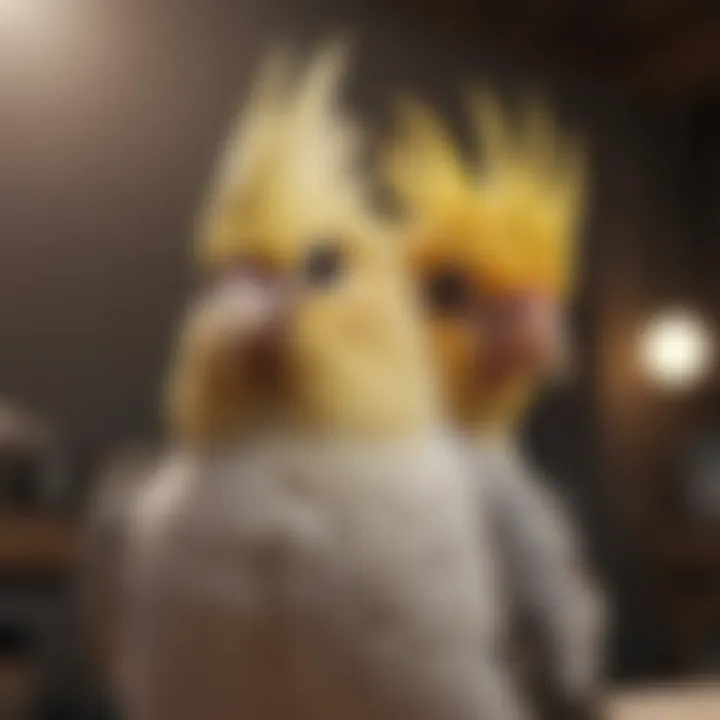
Mental and Emotional Well-being
Just like their physical health, your bird's mental health matters. Ensure a stimulating environment filled with toys and daily interactions to provide opportunities for exploration and stimulation.
Enriching Activities
Keeping your bird engaged will build trust and facilitate personal interaction.
Toys and Playtime Ideas
Provide various toys that cater to beak and foot stimulation. Chewing toys, ropes, and puzzles can reduce boredom. Regular rotation of toys keeps things interesting for them.
Training and Tricks
Teaching simple tricks or commands adds flavor to your routines. Use positive reinforcement techniques as mentioned previously; they work exceptionally well in the learning burd’s domain.
Outdoor Activities and Interaction
Daily time outside for supervised play is valuable. Fresh air, sunshine, and novel environments foster physical and mental health.
DIY Projects for Mental Stimulation
Create DIY toys or activities. Involvement in building activities can foster collaboration. Things like puzzles made from household items offer great opportunities to add fun.
Overall, understanding the various aspects of bird care enhances your ability to choose a suitable pet. This aids tremendously in forming solid relationships that result in happier feathered companions.
Prologue to Pet Birds
Pet birds have a special place in many households. They are often valued for their engaging personalities and unique vocalizations. Individuals considering pet ownership frequently look for species that can bond effectively with them. This section will delve into the importance of handleability in relationship between birds and their owners.
Understanding the Importance of Handleability
Handleability refers to how well a bird can be handled and interact with humans. This aspect is vital for pet owners, as it significantly affects the human-bird bond. Birds that are easier to handle tend to be more rewarding companions. They provide opportunities for interaction and engagement that can enrich the living environment for both bird and owner. Moreover, a handleable bird can enhance feelings of connection and emotional well-being.
Take, for instance, cockatiels and budgerigars. These species generally exhibit friendly behaviors and can become trusting companions. Understanding the significance of handleability can influence the type of bird a prospective owner might choose. Birds with a calm and friendly demeanor are more likely to adapt well to living in a home environment. Their willingness to be handled reduces stress levels in both the bird and the human.
Criteria for Selecting Handleable Birds
Choosing a pet bird requires careful consideration. Handleability is just one of the many factors to consider, but it plays a crucial role in ensuring a harmonious relationship. Here are some essential criteria when selecting a bird based on their handleability:
- Personality Traits: Look for species known for their sociable and friendly behaviors. Birds with gentle dispositions are easier to handle and train.
- Age and Training: Young birds are often more adaptable to new experiences. Opting for birds that have begun socialization can also be beneficial.
- Species Traits: Different species vary widely in their temperaments. Some may naturally exhibit strong handleability traits, while others may prefer solitude. It’s important to research each species before making a decision.
- Past Experiences: Birds that have had positive interactions with humans in their past are likely to be more handleable. Understanding their background can help assess their readiness for frequent handling.
- Health Considerations: Healthy birds are more likely to be active and social. Consult with veterinarians to ensure that the bird has no health issues that might affect their behavior.
The right selection contributes not just significantly to the quality of companionship but can also improve the overall well being and experience for both pet and owner. Emphasizing these criteria leads to informed and fulfilling pet bird ownership.
Top Handleable Bird Species
Top handleable bird species play a significant role in avian companionship. These birds possess qualities that make them ideal for the owners desiring an interactive experience. The focus here lies on the ability of these species to engage and bond with humans through gentle handling. Each species has its own distinct set of characteristics. Understanding these can be beneficial for potential pet owners.
Various elements to consider include the bird's temperament and social behavior. Additionally, care considerations must align with the individual's needs and preferences. The objective is to find a harmonious pairing between the pet and owner. This section will explore some of the most handleable bird species, providing insights for prospective bird enthusiasts.
Cockatiels
Overview
Cockatiels are notable for their friendly demeanor and distinct physical features. Their crest can be raised and lowered, reflecting their mood. This characteristic enhances their interactive appeal as owners can often tell how their pet is feeling. Cockatiels are among the more popular options for new bird owners. They are also relatively easy to care for, which adds to their allure.
A potential disadvantage is their social needs. Cockatiels thrive on attention during the day. If neglected, they may develop behavioral issues.
Behavioral Traits
Cockatiels are social creatures. They enjoy interaction and often exhibit playful behaviors that engage their owners. By mimicking whistles or short tunes, these birds can create an entertaining environment. Their loving nature makes them adaptable companions.
However, they can become nervous in unfamiliar settings. Thus, handling them requires an understanding of their comfort levels. Owners must be patient while helping them adjust to new surroundings.
Care Considerations
In terms of care, cockatiels require a balanced diet including pellets, seeds, fruits, and vegetables. They also need frequent social interaction. A spacious, clean cage is essential for their physical health. Additionally, regular veterinary check-ups help maintain their well-being.
Their lifespan ranges between 10 to 15 years, so commitment is necessary. Owners should paid attention to their habits and behaviors. This awareness helps prevent health issues and ensures their pet remains happy.
Budgerigars (Budgies)
Overview
Budgerigars, often called budgies, are vibrant and small parakeets known for their friendly temperament. They come in a variety of colors and markings. Budgies are one of the most popular pet birds globally. Their playful personalities attract many owners, making them a well-liked choice.
Caring for budgies is not overly demanding, though it requires dedication. Keeping them entertained is vital as they easily become bored.
Behavioral Traits
Budgerigars are active and sociable. They enjoy hopping around their space and playing with toys, demonstrating curious behavior. Budgies are also excellent mimics; they can learn phrases or even small songs.

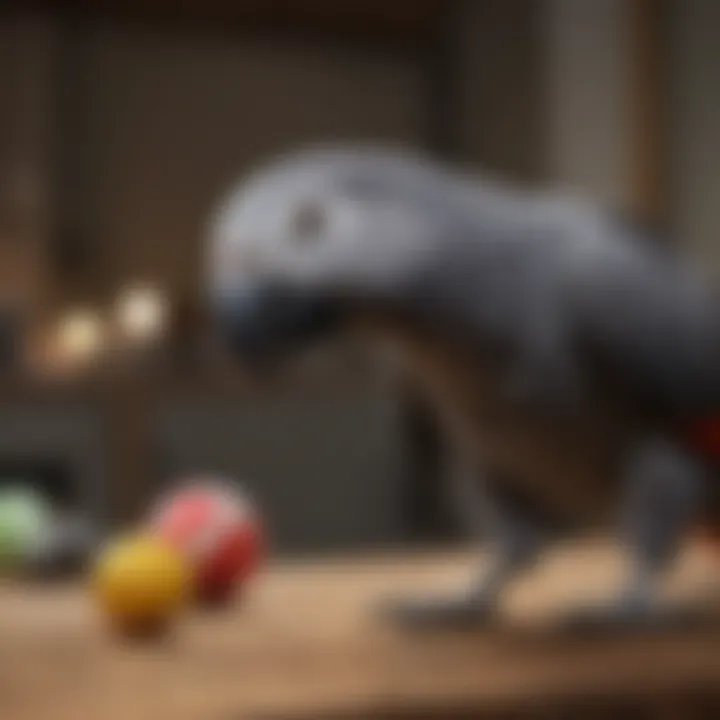
Despite their cheerful demeanor, they can exhibit signs of stress in new surroundings. Proper handling techniques can help mitigate this anxiety, increasing their comfort around humans.
Care Considerations
The diet of budgerigars should include high-quality pellets and fresh produce. This contributes to their good health and longevity. Social interaction is a critical aspect, so owners must ensure daily bonding time. They need an adequately sized cage for plenty of room to fly and exercise.
Their lifespan can reach up to 10 years, highlighting the necessity of long-term commitment. Consistent interaction with the owner fosters maintenance of their social and emotional needs.
Conures
Overview
Conures are medium-sized parrots known for their vibrant colors and playful nature. Many enjoy a lively atmosphere, making them suitable candidates for active households. Their engaging personality adds joy to any environment.
Though attractive as pets, they produce loud calls. This potential drawback can be an issue for those seeking a quieter pet.
Behavioral Traits
Conures are infamous for being attention-seeking. They love to engage and often demand interaction from their owners. Highly social, they form strong bonds and exhibit affectionate behavior. These traits make them wonderful companions.
Yet, their boisterous disposition might be overwhelming. Owners should be prepared for their high energy levels.
Care Considerations
Conures need a well-rounded diet of fruits, vegetables, and pellets. Fresh water should always be available. Regular exercise is critical. They require a spacious cage that allows for playtime outside of their enclosure.
Their lifespan reaches up to 30 years; thus, time and commitment are necessary for responsible pet ownership. Additionally, proper socialization support healthy behavior and strengthen bond with the owner.
Lovebirds
Overview
Lovebirds are small parrot species characterized by their affectionate nature. Known for forming strong pair bonds, they are best kept as pairs or in small groups. They are known for their loyal companionship and charming traits, making them desirable pets.
One notable aspect is their vocalizations. They have soft cooing sounds but can be quite loud at times, especially when excited.
Behavioral Traits
Lovebirds are wonderfully sociable. They thrive on companionship, often seeking out physical closeness. Their playful nature leads them to enjoy toys and games. Lovebirds also exhibit social grooming behavior, which increases bonding with their owners.
However, they can be territorial, especially about their space. New introductions to other birds might necessitate caution and patience.
Care Considerations
The diet should consist of pellets, seeds, fresh fruits, and veggies. Lovebirds require a social environment, and ample cage space reflects their active lifestyle. Commonly, they require attention from their owners daily.
Lifespan ranges between 10 to 15 years, indicating the importance of a proper commitment to their care.
African Grey Parrots
Overview
African Grey Parrots are known for their extraordinary intelligence and vocal abilities. Their patience and attention even transcend into training. They adapt relatively well to handling, so they often tops the preference list for many bird enthusiasts.
Nonetheless, their high intelligence necessitates intensive stimulation. If not met, undesirable behavior can arise.
Behavioral Traits
Highly intelligent, African Grey Parrots exhibit remarkable cognitive capability. They can mimic human speech and often more complex vocalization. Their inquisitive nature encourages problem-solving maneuvers, keeping them occupied.
However, this also implies they can become bored with repetitive tasks, requiring varied activity forms. Thus, mental enrichment is essential.
Care Considerations
Nutritional needs include a diet rich in fruits, vegetables, nuts, and soy-based pellets. As social creatures, regular interaction is vital for overall health and emotional well-being. They require substantive training sessions to engage their intelligence.
With appropriate care, African Grey Parrots can live from 40 to 60 years, indicating a long-term commitment from their owners.
Parakeets
Overview
Parakeets, frequently used interchangeably with budgerigars, include various species. Around the world, they share similar handling traits, affection, and social behavior. Their terminology varies depending on regions.
Like other birds, they form good companionship, gently engaging positively.
Behavioral Traits
Parakeets display inquisitive habits, contributing to their delightful personality traits. These birds like interaction by observing and participating.
They also engage in playful bouts and chatter when comfortable various environments. However playful, embraced safety issues or territoriality is necessary.
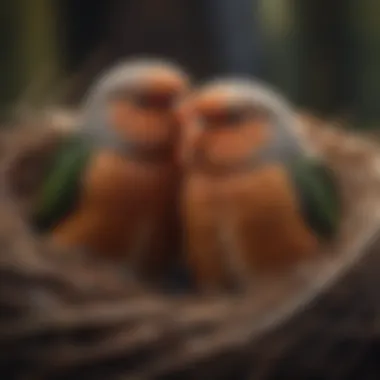
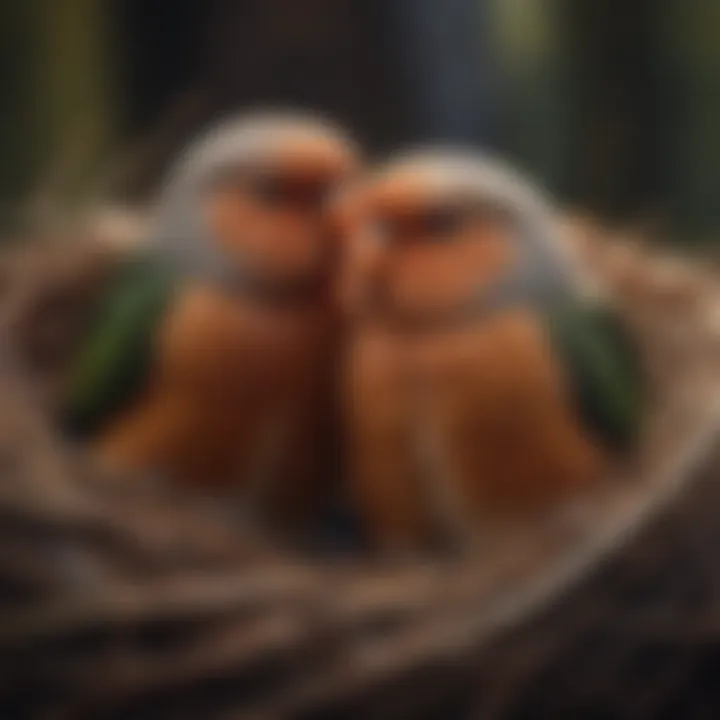
Care Considerations
Necessary care parameters any dietary inclusion leading to general balanced health. Familiarity with caretakers enhances comfort. Social interaction aides derailing lonely tendencies, improving perspective of handling to care approaches.
When considering owning any handleable bird, focusing on social needs, care, and environment is distinctly vital. Their qualities bring fulfillment and companionship within homes while ensuring well-being throughout these relationships. This intricate compatibility caters uniquely distinct interaction within officials connecting through joy amidst any efforts made as affectionate caretakers.
Factors Influencing Handleability
Understanding the factors that influence the handleability of pet birds is crucial for both prospective bird owners and current caretakers. Handleability is determined by several key elements, which can have significant implications on the interactions between birds and humans. Fostering a positive relationship with these creatures requires a consistent approach to various aspects of their environment and care.
Socialization and Training
Socialization begins at a young age and is an essential process for developing a handleable bird. Birds that are well-socialized are more adaptable and comfortable around people. Starting early is vitally important; offering gentle interactions and positive exposure to human activities encourages trust. Common methods involve gradually introducing your bird to different people, making sure that each encounter remains calm and stress-free.
Training plays a significant role in this bonding process. Positive reinforcement training is a common method used to promote desired behaviors in birds. This requires patience and consistence but provides reward, forming a positive connection between the bird and the handler. Techniques such as clicker training help to improve responsiveness and create a supportive environment for both the bird and dedicated owner.
Environment and Enrichment
The environment where a bird lives plays a profound role in its handleability. A stimulating environment reduces stress and ensures psychological well-being. Elements to consider include perches at various heights, suitable toys to encourage natural behavior, and safe areas to explore. Each of these enrichments contributes to the bird's happiness. Proper cage size is also vital; insufficient space can lead to territorial behaviors that hinder handling.
Enrichment activities such as foraging exercises let birds use their natural instincts, which is important for their mental health. This engagement gives enjoyments and reduces aggressive tendencies that can arise from boredom. Therefore, investing effort into creating a rich, interactive habitat is essential for enhancing a bird's ability to bond and engage peacefully.
Health and Well-being
The overall health and well-being of a bird significantly impacts its handleability. Regular veterinary check-ups are essential to address any underlying conditions that can affect a bird's temperament. A bird in pain or discomfort may exhibit fear or aggression, detracting from interactions with humans. Diet plays an important role as well. A well-balanced diet tailored to your bird's species requirements supports both physical health and behavioral stability.
Physical exercise should never be overlookrd, as active birds tend to be happier and more engaging. Offering ample out-of-cage time allows for wing flapping and exploration, promoting healthy behavior patterns.
In summary, understanding these factors can be a game changer in developing a strong bond that enriches both your life and the life of your beloved pet bird. The journey to finding the suitable companions extends beyond simply chosing the species; rather, it demands skilful personal management os nurturing, environment, and health.
To ensure that you build a meaningful and rewarding relationship with your pet bird, invest time in learning about their needs and behavioral patterns.
Handling and Bonding Techniques
Handling and bonding techniques are crucial factors in establishing a positive relationship with pet birds. Proper interaction not only leads to a more enjoyable experience for both bird and owner, but it can significantly influence the bird's well-being. When you prioritize these aspects, you ensure a nurturing environment, which aligns well with a bird's inherent social nature.
Engaging with your bird using appropriate handling techniques can create trust over time. A well-bonded bird is likely to be more comfortable around its human companions and better display social behaviors. This means more joy for bird owners, who appreciate interaction with their feathered pets. Additionally, proper techniques reduce the risk of fear and aggressive behaviors that may arise from improper handling.
Practicing good handling methods minimizes stress during interactions. Without proper handling, pet birds may divert to aggressive or fearful responses if they feel scared. This can lead to a breakdown in trust and make future bonding activities difficult.
Therefore, understanding these techniques is essential to foster psychologycal safety and a harmonious relationship.
Common Challenges in Handling
Handling pet birds presents various challenges that can affect the relationship between the bird and its owner. Addressing these difficulties is essential for fostering a positive interaction and ensuring the well-being of the bird. Recognizing common challenges helps owners adapt their handling techniques and adjust their expectations based on their pet's individual behavior and temperament.
Fear and Anxiety in Birds
Birds are naturally prey animals, and their instinctual reaction to threats is often to flee. This creates a foundation of fear and anxiety that is critical to understand when handling them. A bird that feels threatened is less likely to be sociable, which can lead to difficulty in handling and bonding over time.
Different factors contribute to a bird's fear. For instance, a new environment can be intimidating. Loud noises or sudden movements can also trigger anxiety. It's important to create a calm home for the bird, which helps minimize stress. Sometimes, a bird may simply be skeptical of human interaction; this is common in species that are less accustomed to handling.
To effectively manage fear, consider the following strategies:
- Gradual Exposure: Step by step introduce your hand or body to the bird. Start by sitting near their cage and allowing them to observe you.
- Quiet Time: Give the bird quiet time to sleep and relax. Their space should remain undisturbed, which helps lower anxiety.
- Positive Reinforcement: Reward calm behavior with treats or gentle words. This can help condition the bird to associate human presence with a positive experience.
In cases where a bird exhibits persistent apprehension, consulting with an avian behaviorist can provide you with tailored approaches to improve the situation.
Aggression Behaviors
Aggression in birds manifests in several ways, and understanding these behaviors is vital for effective handling. An aggressive response can range from biting to vocalizing loudly, both forming significant barriers in creating a positive interaction.
Aggressive behaviors can stem from fear, territory protection, or even hormonal fluctuations, particularly in breeding seasons. Birds can view their humans or other pets as intruders. Recognizing triggers, such as demanding attention or feeling cornered, can help narrow down the cause of aggression.
To address aggression:
- Stay Calm: Responding calmly is crucial when a bird behaves aggressively. Sudden reactive movements can escalate the situation.
- Don’t Force Interactions: Allow the bird a safe space to retreat. Forcing interaction may increase aggression and further constrain handling opportunities.
- Reinforce Trust: Building trust is fundamental. Gradually gain the bird's acceptance through handling in short sessions, rewarding good behavior, and allowing breaks when necessary.
Remember, understanding the roots of aggression in birds is fundamental to reducing these instances. Establishing a seamless communication channel with your bird often reflects a nurturing relationship that supports handleability.
The challenges in bird handling remind us of the bond shared. Fostering understanding through patience and effort can significantly improve the interaction dynamics between a pet bird and its owner.
Closure
The importance of understanding the handling aspect of pet birds cannot be overstated. This article has provided valuable insights into the nature and needs of bird species that are widely recognized for their handleability. Assembling the pieces of care requirements with behavioral traits leads to a more fulfilling ownership experience.
Recap of Handleable Species
In our exploration, several species have emerged as especially suited for handling.
- Cockatiels are sociable and enjoy human interaction, making them a common choice among bird lovers.
- Budgerigars, or budgies, thriving on companionship, are affectionate and respond to handling.
- Conures exhibit playful behaviors and enjoy engaging in activities with their owners.
- Lovebirds show a unique level of attachment, often forming strong bonds.
- The African Grey Parrot's intelligence requires effective stimulation, which makes handling opportunities essential for their well-being.
- Parakeets, likewise, flourish in social scenarios, displaying cheerful personalities with proper handling.
These species share a common thread of firm-rooted relationships with their humans. Prospective owners should ensure they choose a bird species that aligns with their lifestyle and willingness to commit to interaction.
Final Thoughts on Bird Handling
As bird enthusiasts contemplate bringing a new companion into their lives, it remains vital to consider the long-term implications of handling. Training and socialization, paramount in shaping a positive dynamic, cannot be overlooked. The health and environment of the bird play crucial roles too. Understanding requirements leads to informed decisions and heightened connections.
In essence, owning a pet bird demands consideration beyond basic care. Effective handling can therefore enrich every moment shared between bird and owner, contributing to immense joy and companionship. The interactive bond formed is not only beneficial for the bird’s emotional state but also for fostering a deep sense of satisfaction in the owner. Prepare thoughtfully. The journey ahead can be rewarding, carrying endless possibilities for avian adventure.















